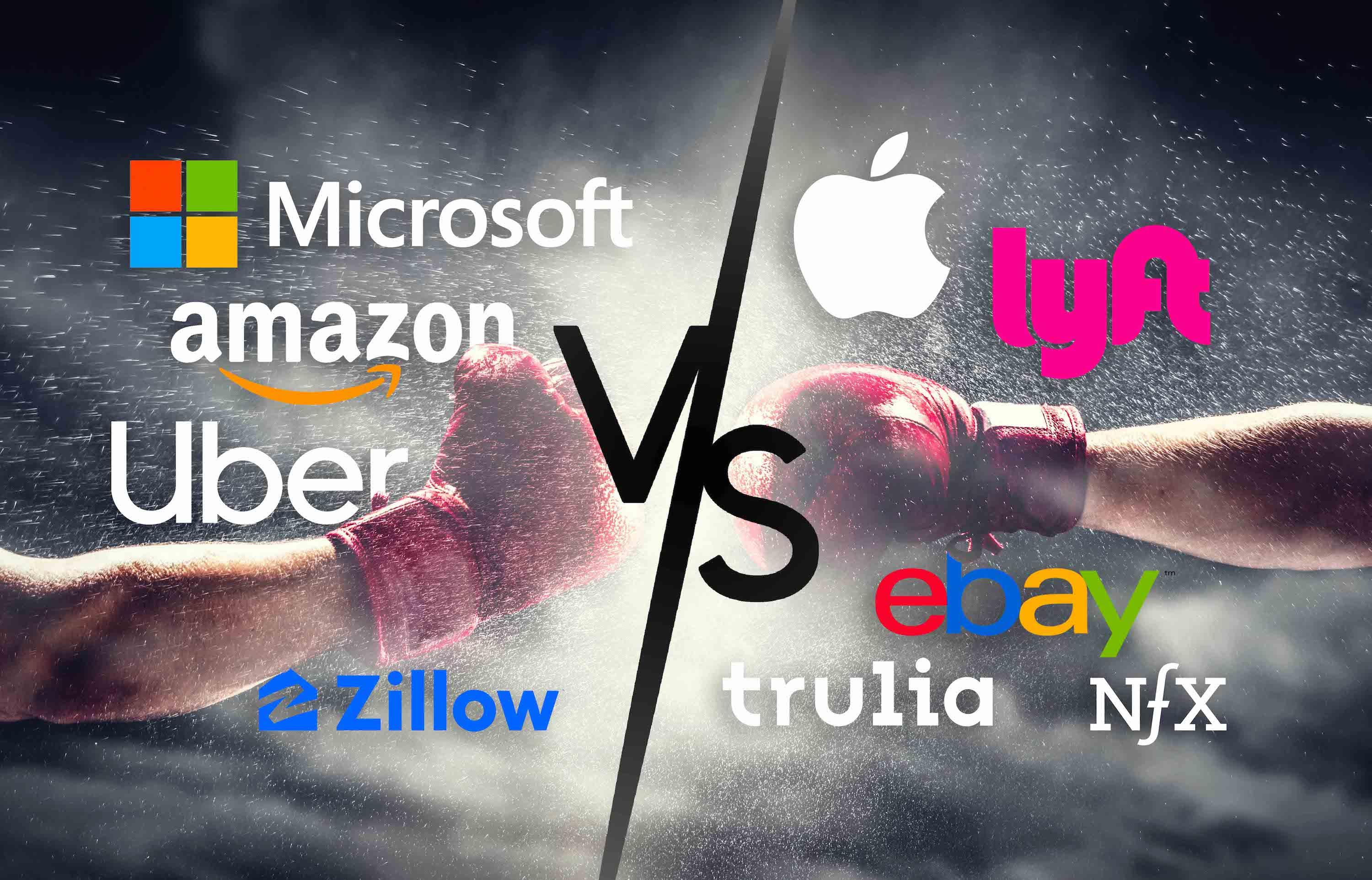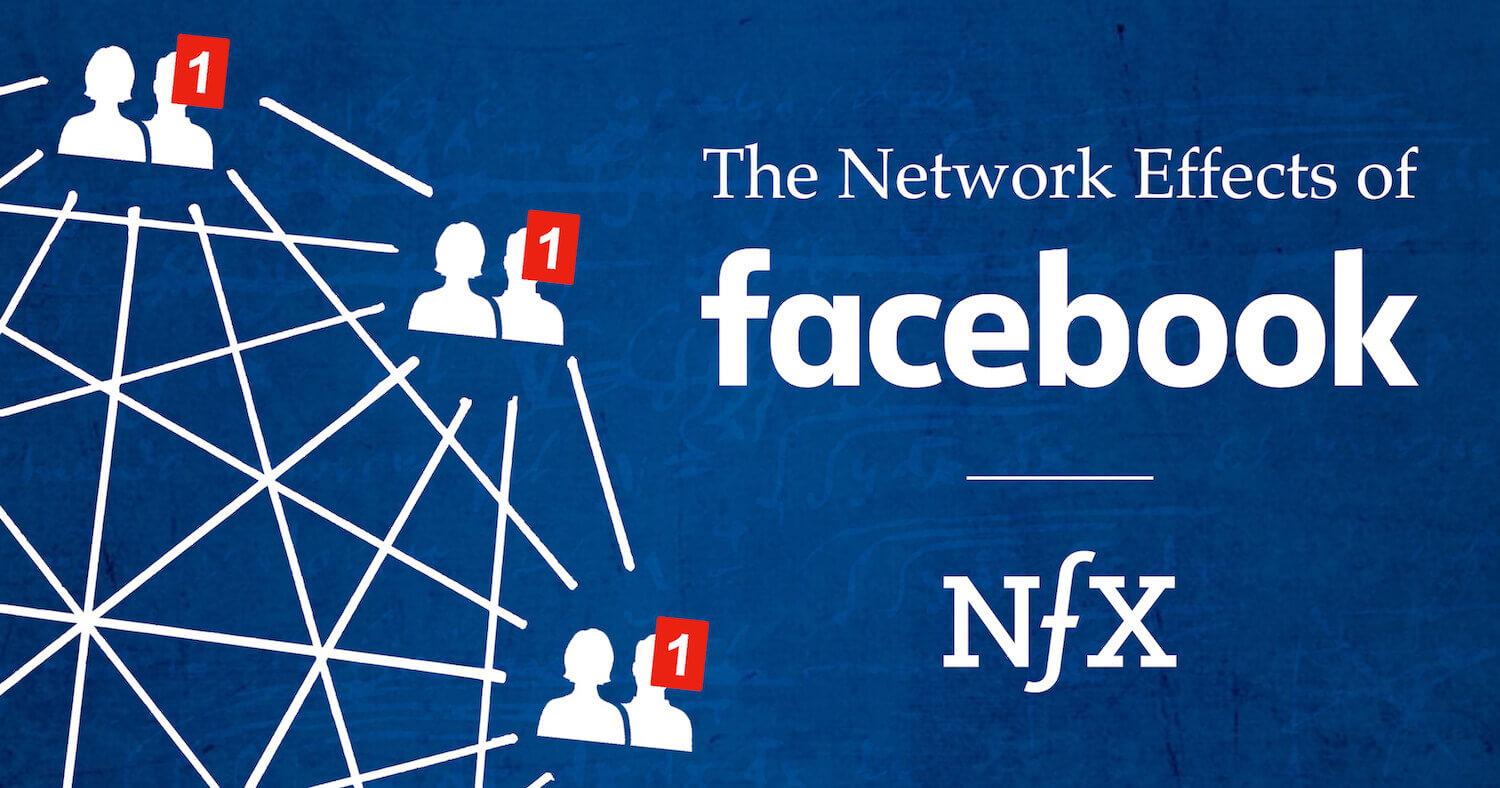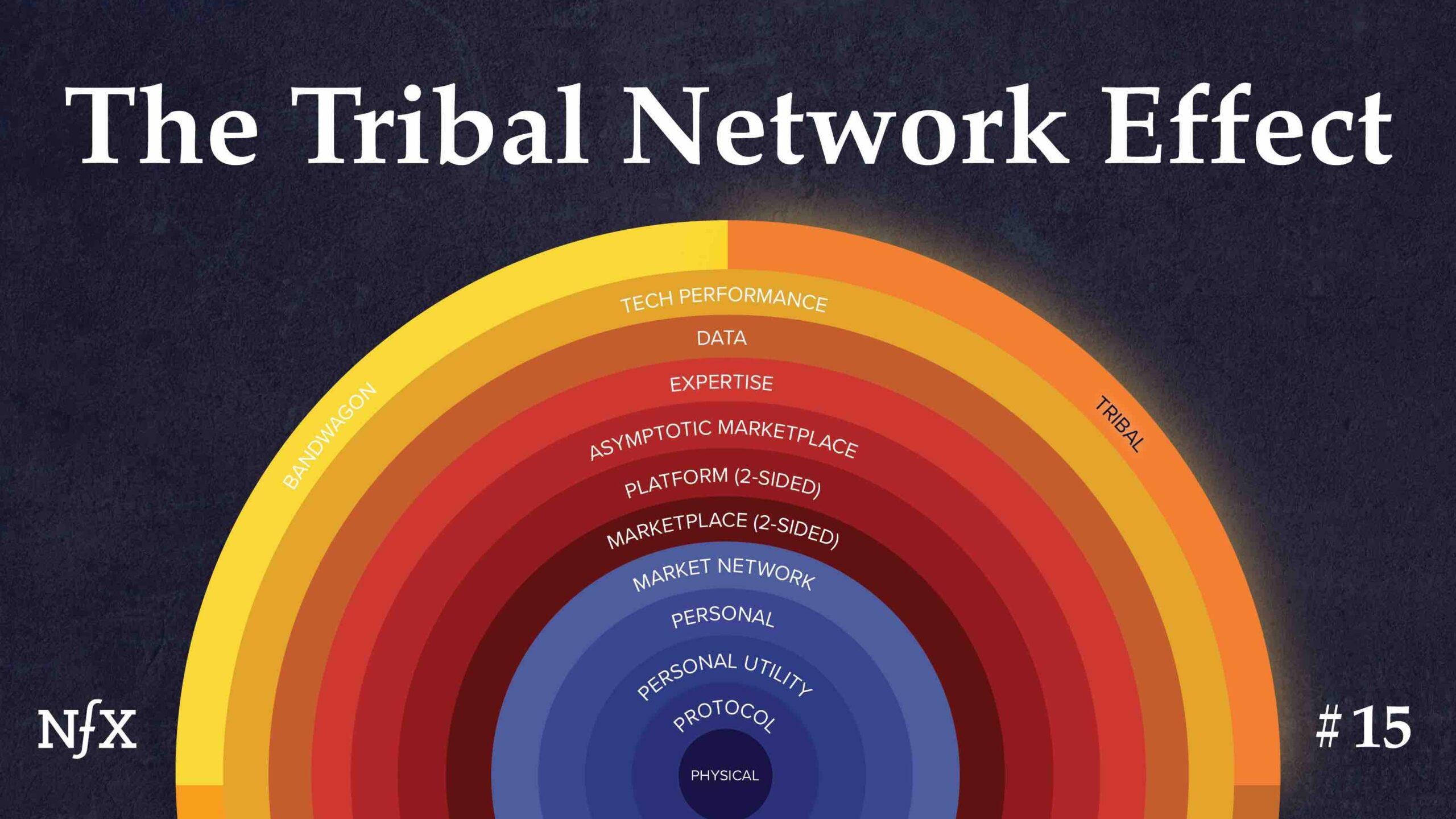

In 2017 we published the NFX Manual which laid out 13 types of network effects. We later identified and published the “Expertise” network effect, which was the 14th type.
Today, we’re sharing the 15th type of network effect: Tribal Network Effects.
The easiest way to understand Tribal network effects is to start by looking at the powerful network forces of school alumni networks, as discussed in Your Life Is Driven By Network Effects. Tribal network effects most often develop in alumni networks of schools, military units, fraternities and sororities, accelerators, languages, regions, and religions.
Tribal network effects are another of what we call “social” network effects, joining the three other social nfx we’ve identified: Bandwagon, Language, and Belief. This is because they exist in the minds of people and not in data and wires. The unique attribute of Tribal network effects is that they exist because of how people form their identities around (no surprise)… tribes.
We suspect this was the very first network effect historically, as Homo sapiens evolved as a pack animal, trying to survive. The ones that built the best tribes survived to procreate, so we are all descendants of the best tribe builders. Those who weren’t good at building or joining tribes died off. Thus, our brains are wired to join tribes.
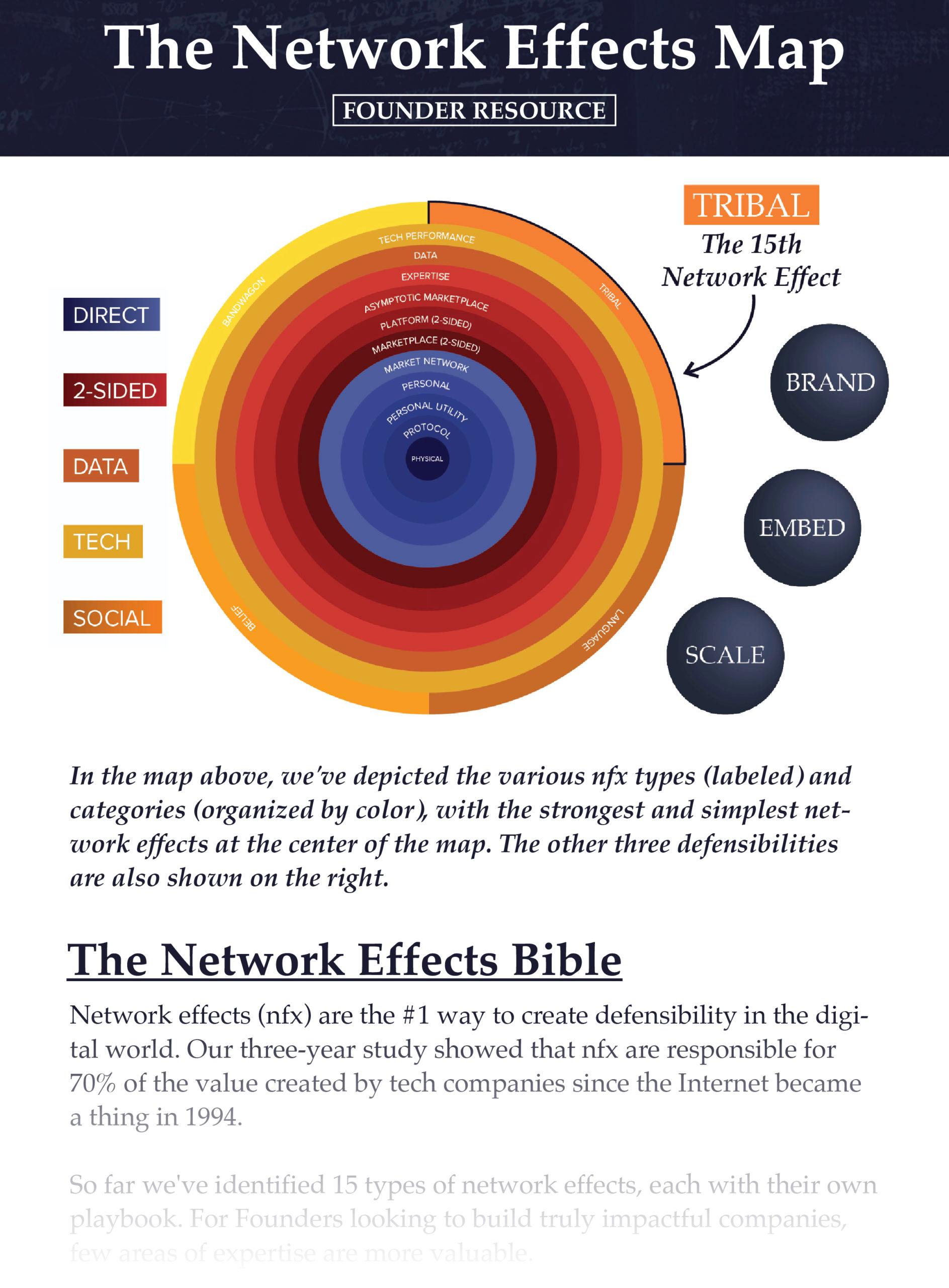

How Tribal Networks Form
A few key things contribute to the formation of strong Tribal network effects:
- The tribe is presented as an ingredient of a person’s identity, part of how that person is perceived by others. One might think: “It’s who I am.” This forms a self-concept.
- Network members within the tribe are taught to be intentional about building the value of the tribe by:
a. adding value to other tribe members,
b. defending the tribe’s reputation,
c. receiving value from the tribe members, and
d. growing the tribe.
This intentional value creation and defense of a network is distinct from other types of network effects, where nodes largely contribute value and drive network effects unintentionally. - In contrast to the in-group of the tribe, there is an out-group that the tribe is actively NOT. A different group, a rival, an enemy, a force to be fought.
- A perception of higher-status attributes of members of the tribe, creating prestige and pride. Evidence or reasoning that members of the tribe are more committed, more “right”, more justified, smarter, stronger, etc.
- Members of the tribe endure shared hardship or adversity, such as training for the marines, studying for tests in college, founding a company, or going through a boot camp of some kind.
- Tribe network members overcome a barrier to get into the tribe. There must be a believable reason for your inclusion, and some demonstration of your worth or “fitness” for inclusion. There is often a period of worrying you won’t “get in.” This creates exclusivity and belonging in the minds of the tribe members, reinforcing the other five attributes.
Not all tribes share all six of these characteristics, but the more they do, the more powerful the tribal self-identification becomes in the minds of the tribe members, and thus the stronger the Tribal network effect.
As with other network effects, network size and network density also matter in the formation and strength of Tribal network effects. The larger the tribe, up to a point, the more valuable it becomes because you are more likely to encounter and form relationships with other nodes. College alumni networks, for example, often have clusters in many different cities and companies where alumni seek each other out. Tribal networks also have a higher density of relationships between nodes because self-identification between tribe members causes them to look for shared affinities, and motivates them to altruistic behavior towards other nodes in the network.
That, in turn, leads to a higher proportion of shared connection between tribe members than in other types of networks, which incentivizes further relationship-formation and sets off a virtuous cycle. In a tribal network, people (often unconsciously) recognize that potential connections are more likely to materialize into actual connections, causing a self-fulfilling propensity to try harder to build in-tribe network connections. This creates a denser lattice of links between the nodes, driving network effects, and network value.


Different Forms and Strengths of Tribes
We each belong to many different tribes. In other words, we are each a node in many tribal networks. The way humans form their self-concept is through many different “identity pegs.” We are complex and multi-layered.
For example, as a Princeton alum, I belong to the Princeton alumni tribe. As a Bostonian, I belong to the Boston tribe. As someone who built my life and career in Silicon Valley, I belong to the tech tribe. As an American citizen, I belong to the American tribe.
The strength of each of these tribes depends first on how effectively they build network effects based on the six attributes listed above that contribute to tribal network formation.
The strength of each tribe also changes based on the context. For instance, if I’m on a trip to Washington DC and I meet someone else from Silicon Valley, the “tech tribe” part of us might activate and give us more incentive to build a connection. The same thing applies if I meet someone who also went to Princeton, or if I see another Celtics fan on the street in Florida. These different tribal identity layers activate when they distinguish me from the broader network environment.
The strength and importance of a tribal network are also based on how much membership distinguishes you from others around you in the moment. The more you are distinguished, the stronger the self-identification with the tribe. This allows other nodes in the tribal network to more easily identify you and take action to support you, activating the tribal network effect.
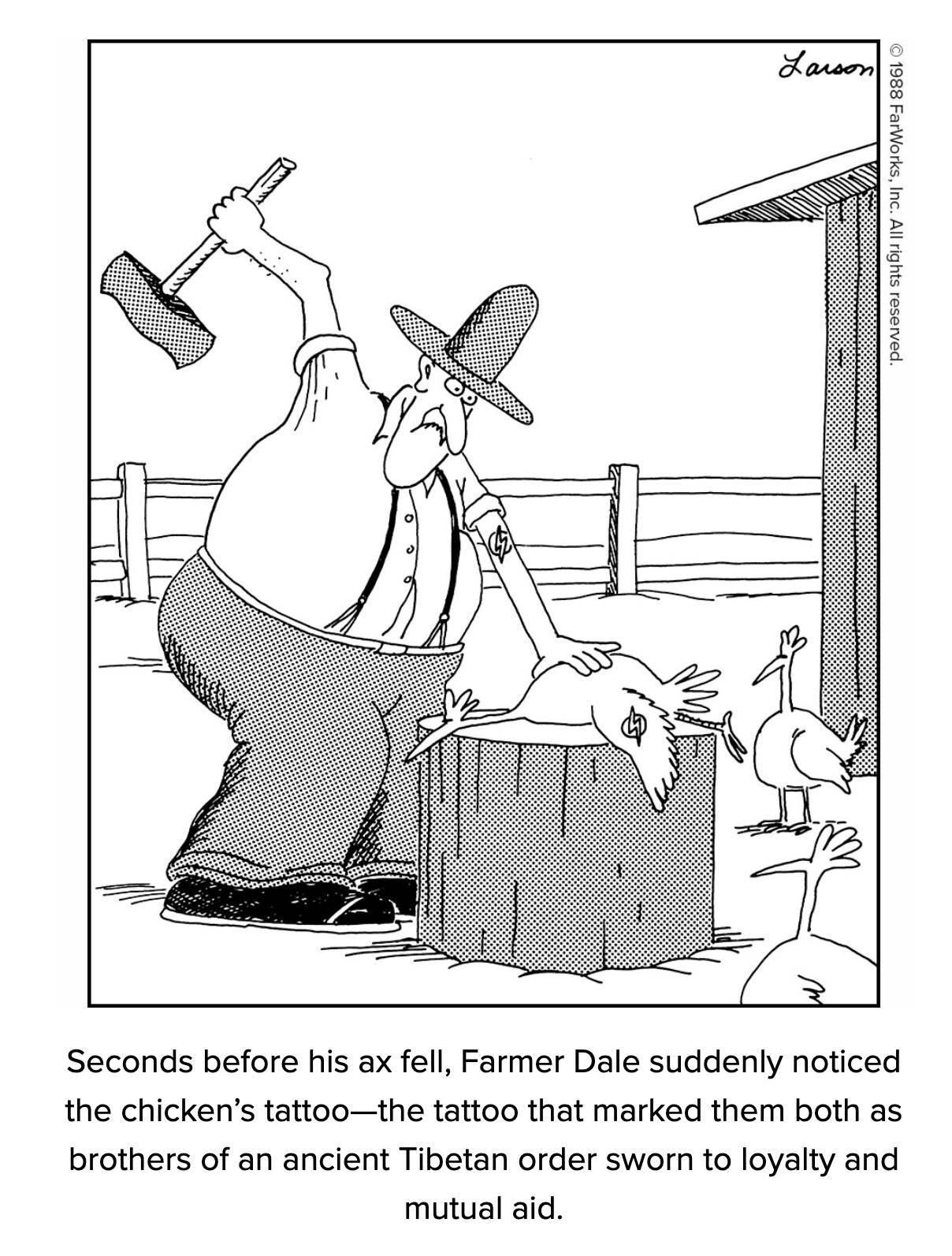

NFX does not own the rights to this cartoon. They are owned by the genius Gary Larson, the writer of The Far Side. Please visit his site https://www.thefarside.com
The comic above exposes a serious point: we self-identify with and give value to those who share membership with us in a tribal network. We’re incentivized to treat other tribe members as if we know them, even if we don’t. In this case, the size of its tribal network saved the chicken’s life. Now that’s value! And network effects are about making more value for all members with every additional new member.
Rivalry Reinforces Tribal Identity
Because our tribal identities are most triggered when they distinguish us from those around us, rivalries and competition play a key role in raising our level of self-identification with tribes.
For example, think about some of the most famous sports rivalries: Duke vs. North Carolina, Ohio State vs. Michigan, Red Sox vs. Yankees, Liverpool vs. Manchester United, etc.
Competition and rivalries improve group cohesion and power the network effect. It creates an in-group and an out-group, and the human mind is structured to highly value their in-group, particularly when the contrast with the out-group is most visible. We naturally respond to “a battle” of some kind, a force my tribe is “against.”
You are more likely to feel protective and invested in your Duke tribal identity the day of a Duke vs. UNC game because the presence of a shared adversary increases the overall level of shared investment in the outcome. Nothing drives attention quite like the drama of “us against them.”
When your tribe wins, it feels like you win.
Note your daily personal experience of having your identity connected to tribal identities. It feels positive when your tribes are winning, and it feels negative or dark when competing tribes are winning.
How Founders Can Positively Leverage Tribal Network Effects
There are four main ways to put your new understanding of Tribal network effects to good use.
- Think of building a tribe for your employees. This helps create great culture in your company. When you hear about a company that has very loyal employees who want to recruit everyone they know to work with them, it’s usually a sign that leadership is pushing hard on the elements that lead to strong tribal networks and a strong company culture. Examples of this are Amazon, Netflix, Facebook, and Microsoft.
- Think of your customers as a tribe. Companies that do this successfully are Harley-Davidson, ActBlue, Apple, Facebook when they started with colleges, NFX with its portfolio who are its customers, and potentially boot camps like Lambda School.
- Think of your investors and partners as a tribe. Which investors/partners like and trust each other? Which investors/partners dislike each other? For instance, in healthcare, taking capital from one “strategic investor” like an insurance company such as United will mean that another insurance company will be less likely to use your software or service because you will be perceived as being in a competing tribe. The same might be true if you take capital from Salesforce Ventures in the SaaS space. Some American investors/partners might be suspicious if you take capital from certain countries.
- Think about markets as tribes. Which tribes are you drawing your customers and employees from? The more customers you win in one tribe, such as Lyft getting more customers in the Boston tribe, the more that tribe will hear about you and trust you, lowering your CAC and increasing retention. The more employees you hire from the Notre Dame tribe, the more Notre Dame alumni you will have access to.
Tribal Networks Have Transformative Value
Our tribal networks add value to our lives by giving us an emotional sense of belonging and identity, and by helping us form useful connections.
For Founders, tribal identities are powerful and enduring, and they generate transformative value throughout your lifetime.
It’s one of the many reasons why at NFX we don’t call our “portfolio” of investments a “portfolio.” We call it the NFX Guild. We’re in the business of giving all our companies every advantage we can. We believe that one of the best ways to do that is to nurture a tribal network effect in the NFX Guild, for the enduring, lifelong benefit of our Founders.
The history of innovation shows that tight, dense, and engaged communities of innovators — tribes — are often at the forefront of technology’s biggest leaps forward. If that’s something you want to be a part of, come talk to us.


As Founders ourselves, we respect your time. That’s why we built BriefLink, a new software tool that minimizes the upfront time of getting the VC meeting. Simply tell us about your company in 9 easy questions, and you’ll hear from us if it’s a fit.

